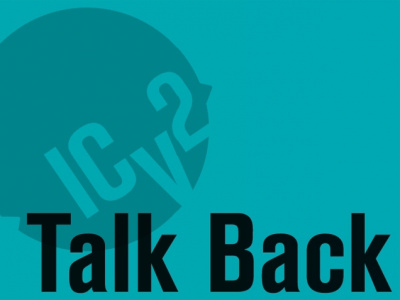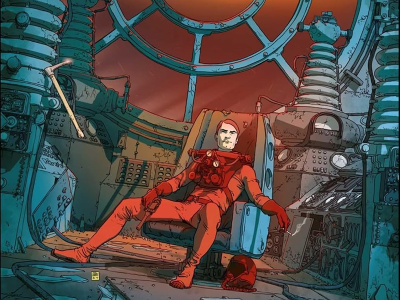 Confessions of a Comic Book Guy is a weekly column by retailer Steve Bennett of Super-Fly Comics and Games in
Confessions of a Comic Book Guy is a weekly column by retailer Steve Bennett of Super-Fly Comics and Games in Just about every day I visit Tom Spurgeon's ComicsReporter Website, one I've long admired for its insightful coverage of the comic book and comic strip industries, so I was pleased (sort of) when he decided to take notice of last week's column which he quoted in part:
'...it's only a rough notion that I have yet to develop, but this article by retailer Steve Bennett about his dissatisfaction with the content of certain comic book stories led me to think about the maturity of the comic book direct market and what that means in terms of that market developing its own, unique standards of good and bad. To look at it another way, I probably wouldn't agree with Steve Bennett about what makes a good comic, but at this point we may be talking about much different things than a similar critic may have been talking about with a retailer 25 years ago.'
Well Tom I've also admired your eclectic tastes in comics so I'd like to think we'd agree at least a little about what makes for a good comic, but I agree on both of your points. Twenty-five years ago we probably would still have been talking about 'elevating the medium' when now the main subject of the conversation is 'how can we make comics sell better?' And I do think the market can develop 'unique standards of good and bad' comic books.
And since no one else has volunteered to jumpstart this discussion, I'll throw myself under the bus first.
Now I'll admit back when I was working at Dark Star I was never particularly proficient at pricing back issues, but I got to the point where I was pretty good at determining what a comic book's condition was; I could even articulate what constitutes Poor, Fair and Good (Very Good and Pristine comics coming into the store being rare). But of course judging the condition of comics and its contents are two very different things. Or is it?
First, to retailers, comics have to be a product and judged that way, not by a retailers' personal preferences (i.e. for the life of me I can't understand what anyone gets out of an issue of Witchblade -- but that's never stopped me from selling the title) or likes and dislikes when it comes to creators, genres and art styles; not as literature; and certainly not as art.
A good comic book should demonstrate a certain level of professionalism when it comes to script and art (that might seem fairly subjective; I think it's one of those 'I know it when I see it' deals).
A good comic has to sell this month and next; when collected in hardcover and trade; and increasingly it has to sell all of the ancillary merchandise (action figures, statues, direct-to-DVD animated features, etc.). It does that by satisfying the consumer, providing enough value in the form of action, drama, soap opera and laughs. It builds brand loyalty for the publisher and character. In short; it makes them want more.
Going a little farther afield, as the late, great Don Thompson (for those coming in late he with his wife Maggie co-created the Comic Buyer's Guide) used to say, 'a good comic is about something.' And while a lot of contemporary comics are about 32 pages, good ones have a point, an individual point of view, and most important, a good comic book should tell a story (I used to believe it had to have a middle, beginning and end but realize that ship has sailed and isn't likely to make a return voyage).
Anyway that's what I've come up with. I don't delude myself I have any definitive answers but hopefully at least it's a start.
As a fan of bande dessinee (literally 'drawn strip') and someone who has always wanted more European comics translated into English, I have to touch on Marvel's deal with French comic publisher Soleil. I've been lucky enough to read the first three volumes of their first entry Sky Doll (all three were printed in the Summer 2006 Sky Doll Special issue of Heavy Metal), and putting on my critical hat for a moment, can tell you they're quite good.
Transforming once again into a retailer, I have a lot of questions about them as product, chief among them being what size is the American version going to be? What's the price break? And can the market sustain the introduction of even more product? Mostly I'd like to know what makes Marvel think they can market European comics to Americans where no one else has succeeded (DC's just recently failed with their deal with French publisher Humanoids). Yes, I certainly do know about the publisher Cinebook (I just had to order a copy of Yoko Tsuno: On The Edge of Life from Amazon because I couldn't find it anywhere else), but they're British.
The fact that the balloons are empty in the preview pages being offered does gives me hope though. As I've said (and said and said), besides the format one of the problems with importing European comics is no one ever (a) springs for an American translation and (b) American style lettering. Japanese comics are adapted for an American audience so why not European ones?
Come on Marvel, spend a little extra money up front and give the material a proper translation. And while you're at it, why not go after the license for The Smurfs? They just had their 50th anniversary and there is a movie coming up...
The opinions expressed in this Talk Back column are solely those of the writer, and do not necessarily reflect the views of the editorial staff of ICv2.com.







